2025 Land Rover Defender 90 Review: Still Nails The Brief
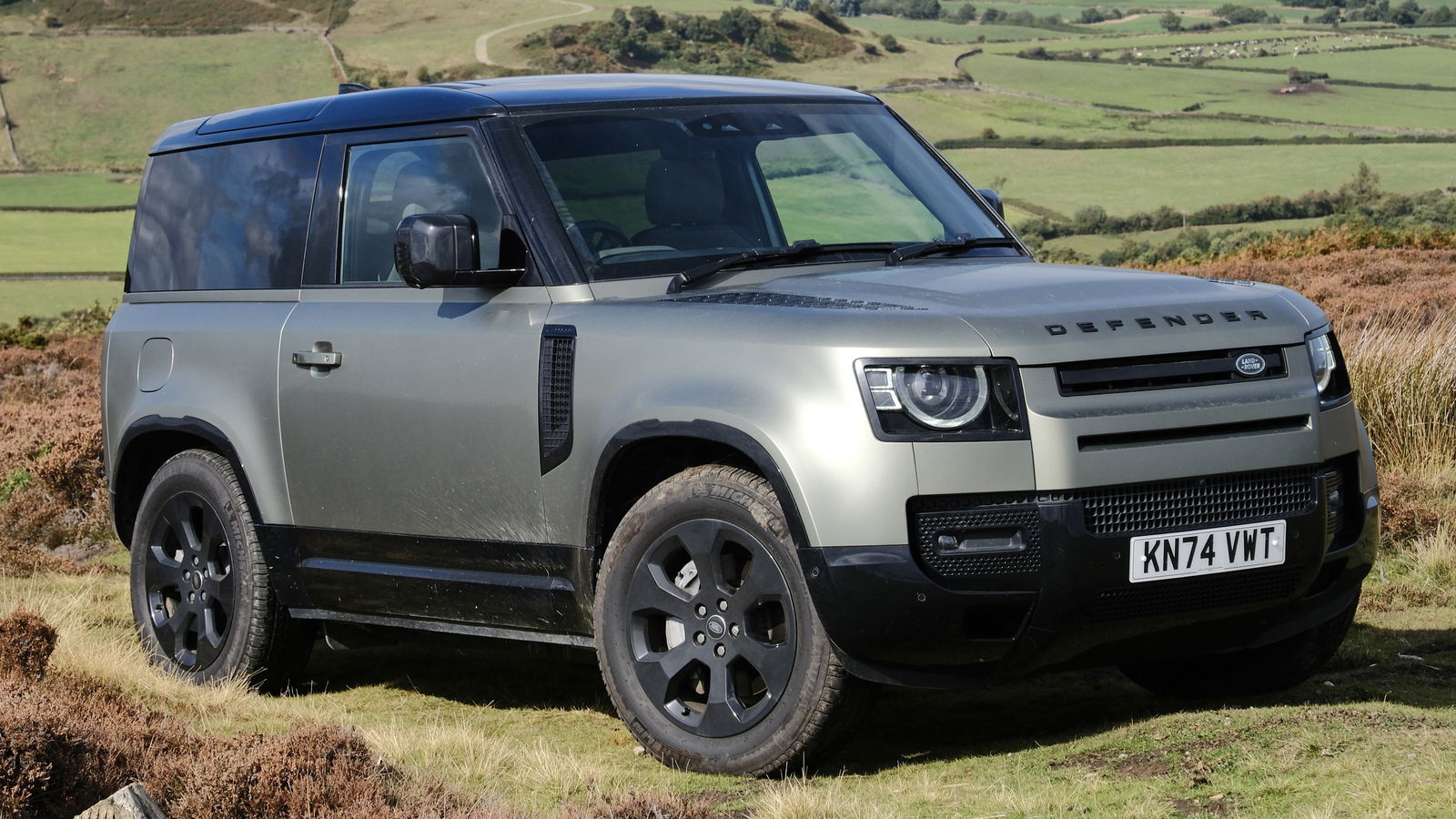
Pros
- Fantastic interiorAll-round ability
Cons
- Build quality worriesThirsty for a diesel
Amazingly, over six years have passed since the world was first introduced to the new Land Rover Defender. We know – the slow, relentless march of time comes for us all, etc, etc.
Despite some early hoo-hah from Defender diehards bemoaning the fact that you can’t hose out the interior or chuck a sheep in the back without it getting poo all over the nice leather, and the usual question marks over Land Rover build quality, it’s only gone from strength to strength since (ignoring the fact that as we write this, the factory’s only just gone back online after a month off due to that cyberattack).
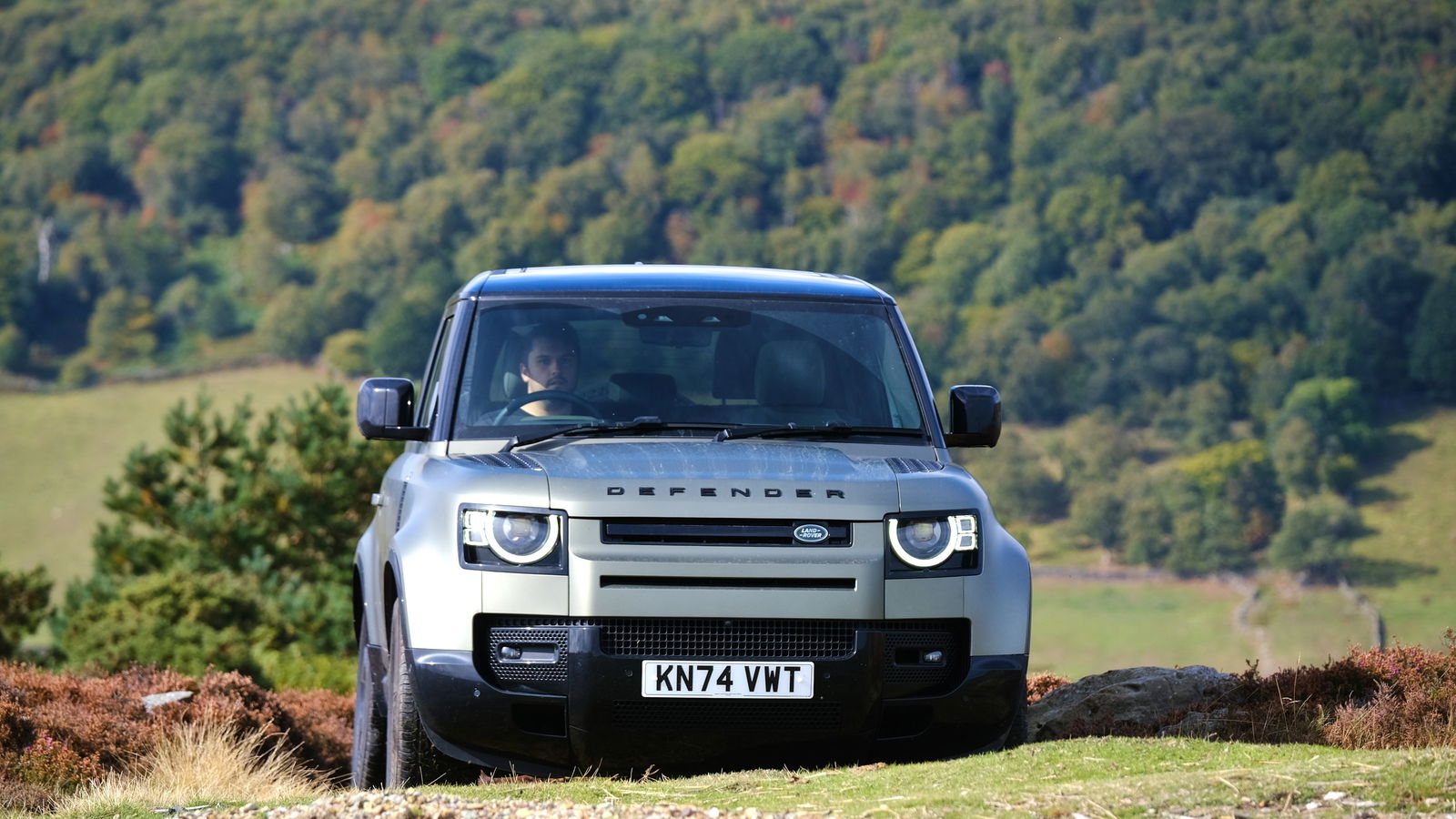
We’ve even been treated to some fast ones, and deeply enjoyed our time with them – the Defender V8, with its old-school supercharged JLR lump, for being a joyfully pointless bus that does a passable speedboat impression under heavy acceleration; and the BMW-powered Octa, with its mind-boggling suspension, for being a genuinely astonishing middle finger to the laws of physics.
But they’re not the ones people have been buying en masse in Britain. Mostly, those are nicely-specced diesels that look the part down at the kids’ rugby game but don’t cost your annual income to fuel. Half a decade since we drove it on the UK launch, then, it’s time to get reacquainted with the sort of Defender you might actually buy if your address doesn’t have ‘Houston’ or ‘Dubai’ in it.
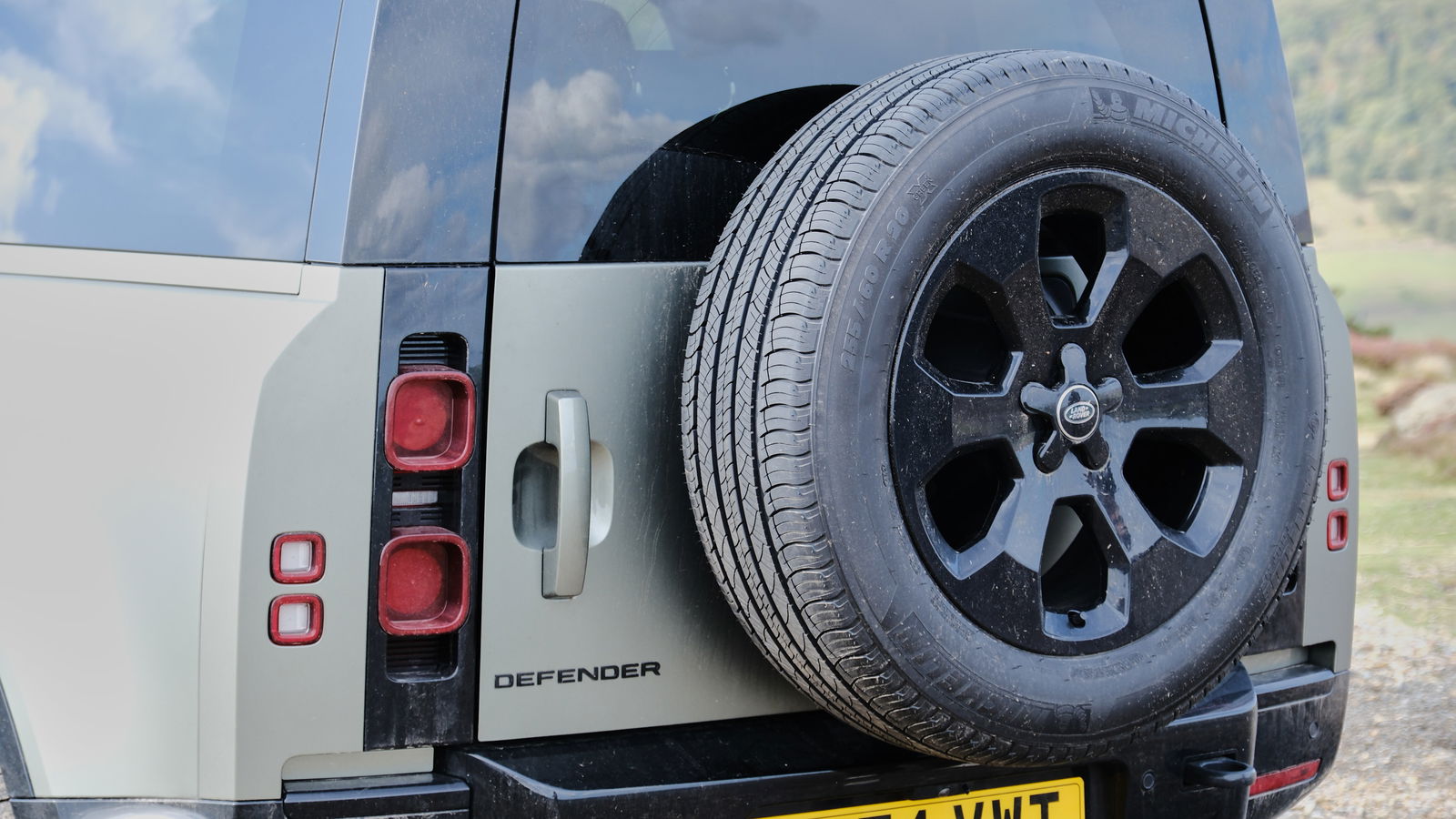
Sensibly, Landie hasn’t seen fit to muck with the formula much since launch (even an incoming facelift is barely noticeable in its changes), and the Defender still looks flipping brilliant, especially in this short-wheelbase 90 guise – in touch with its considerable heritage, but still thoroughly modern. The design brief really was nailed in that regard.
Away from the V8s, powertrain choices have been slimmed to a petrol PHEV, only available on the mid-length 110, and a pair of 3.0-litre, six-cylinder diesels – the D250 and D350, the numbers referencing metric power outputs. We’ve been driving the gutsier of the two diesels, and a lovely motor it is too. With two turbos strapped to the engine, it delivers 345bhp and 516lb ft of torque, all delivered as smoothly and strongly as you’d hope from a big diesel six.
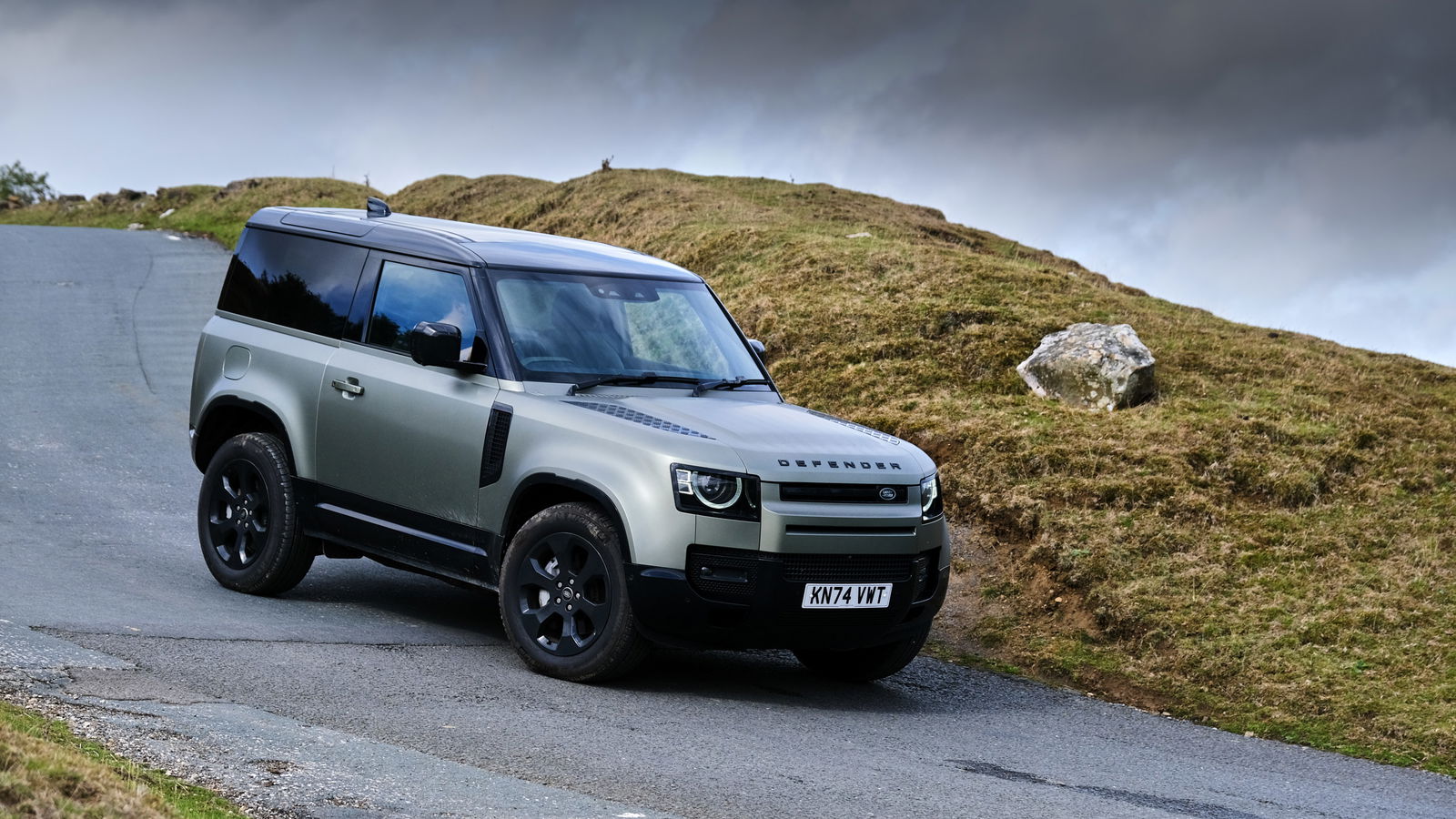
Land Rover quotes a top speed of 119mph and a 0-62mph time of 6.2 seconds, but despite its ample grunt and spritely-sounding acceleration, it’s not to be mistaken for some sort of performance car. It lopes away from a standstill, and most big accelerator inputs are met with noticeable lag, both the sort that’s baked in from a standstill, like in lots of modern cars or the sort that results from the eight-speed ZF auto banging down a couple of gears when you exit a village.
Not that this is a bad thing, mind – it’s a big, lollopy diesel off-roader, so having a snappy throttle would have been entirely at odds with the rest of the car. That’s a sentiment that can be applied to the rest of the drive, too – purists may have baulked when they found out the new Defender was moving from a traditional body-on-frame construction to its new D7x aluminium monocoque, but make no mistake, it’s still a lot more utilitarian than, say, a Range Rover.
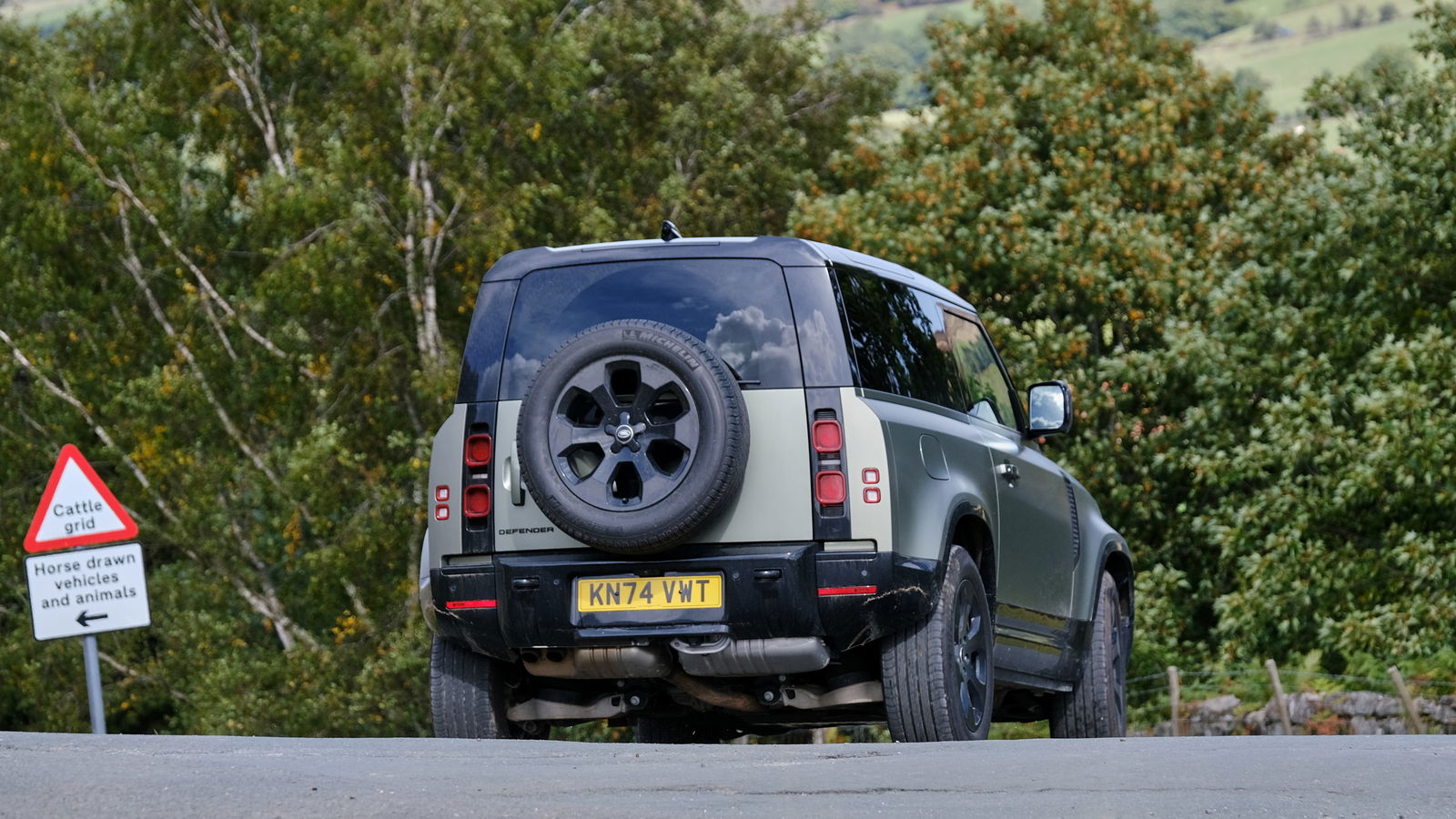
The steering is light and will need a lot of twirling in tight spaces, and it’s unsurprisingly not the most coherent thing to drive fast – the roly-poly suspension and relaxed steering and power delivery will see to that.
As a cruiser, though, it’s leagues better than anyone could have imagined a Defender being 20 years ago. Again, it’s no Rangie – sitting on a motorway, its tower-block aero means you’ll be dealing with some noticeable wind noise, and because it’s still been properly engineered to go off-road, the steering requires lots of little corrections. But the engine is smooth and quiet, and the ride on our car’s optional air suspension is composed and relaxed.
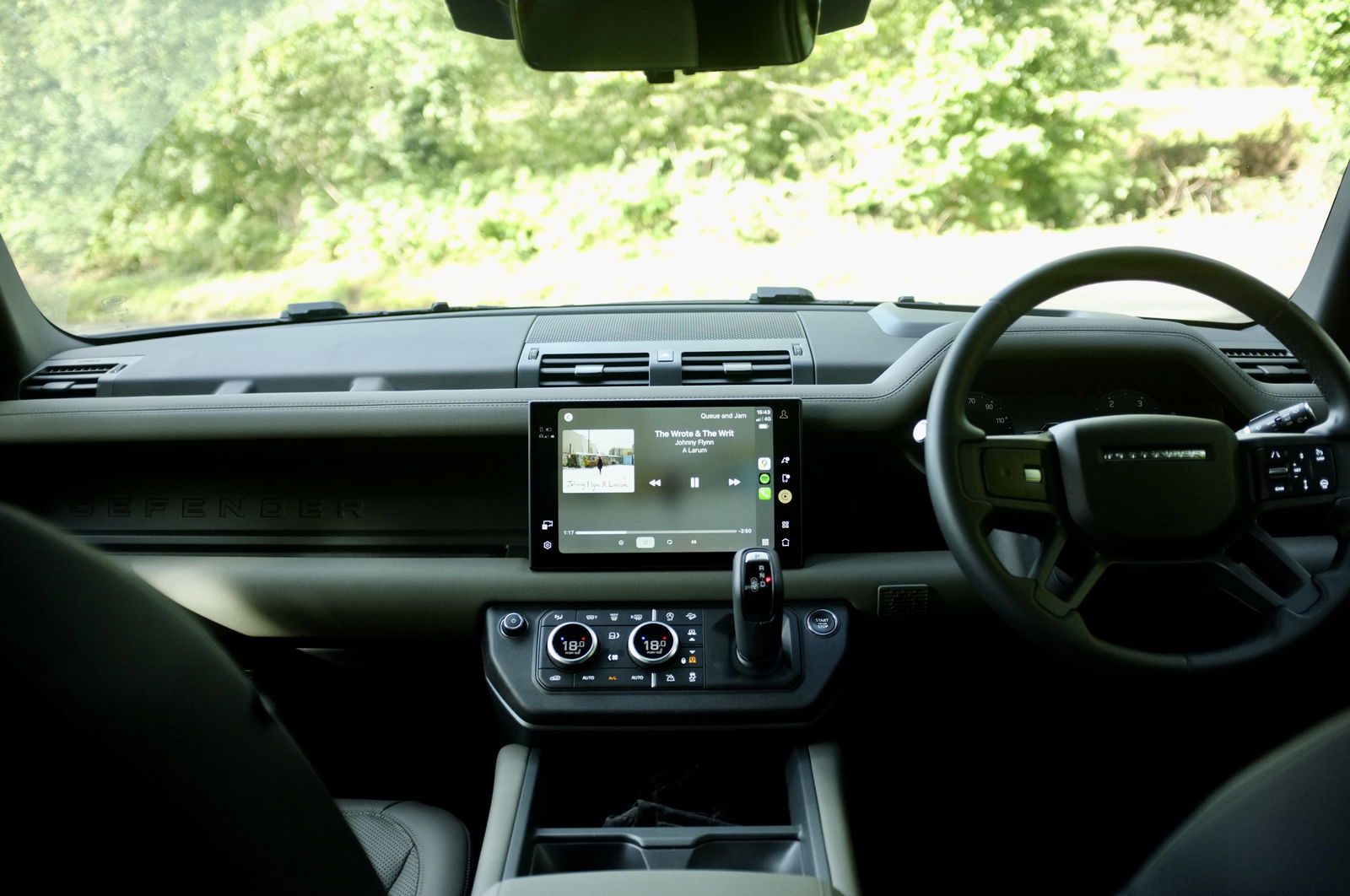
Then there’s the interior, still arguably the Defender’s centrepiece after all these years. Because it’s been designed to be everything from a hard-working commercial vehicle to a posh family runabout, the cabin blends all the best bits of all the jobs it’s trying to do. There’s storage space that would put most vans to shame – you can even tuck stuff behind the infotainment screen – yet materials that befit a car that you can spec up above £100k alarmingly easily, and a wonderful feeling of light and space.
It’s well laid out, too – the two rotary dials below the screen can switch between different functions, and they’re a good middle ground between keeping the dash modern and decluttered and avoiding it looking dated (sensibly, Landie is keeping these around for the Defender’s upcoming facelift, and not misguidedly binning them off like it recently did in the Range Rover).
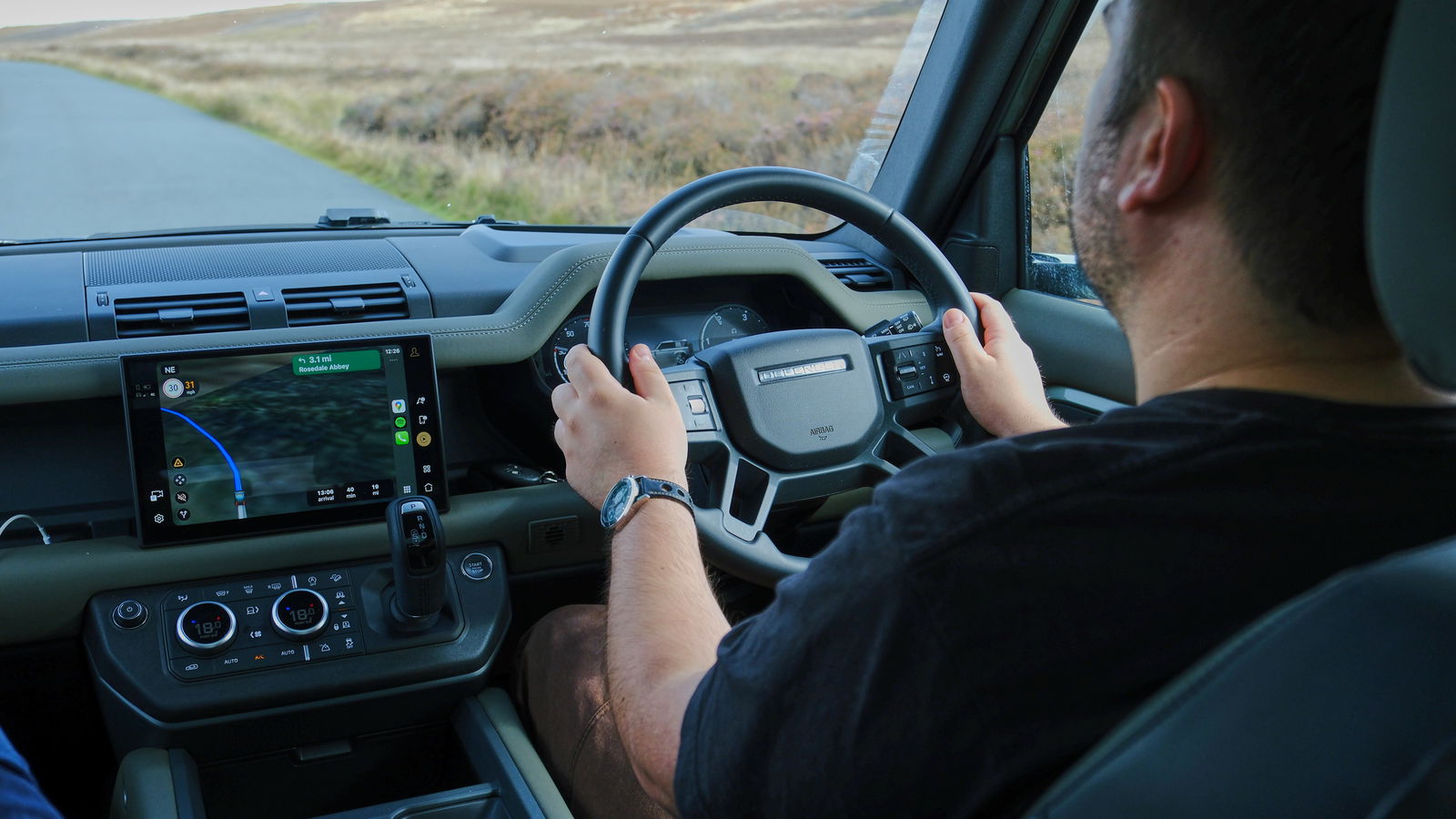
It’s without a doubt one of the best modern SUV interiors, although the spectre of JLR build quality is always lurking. Our year-old test car had just crept over 10,000 miles when it arrived, but already, one of the posh Meridian sound system’s speakers was blowing horribly whenever a song got vaguely bassy. Cue a lot of Bon Iver and not much of The Prodigy soundtracking drives.
A couple of other things to note – the boot on the three-door 90 is pretty hopeless, but that should be obvious enough just from looking at it. Once any rear passengers have clambered into the back, though, they’re treated to plenty of leg- and headroom, but a strangely high floor.
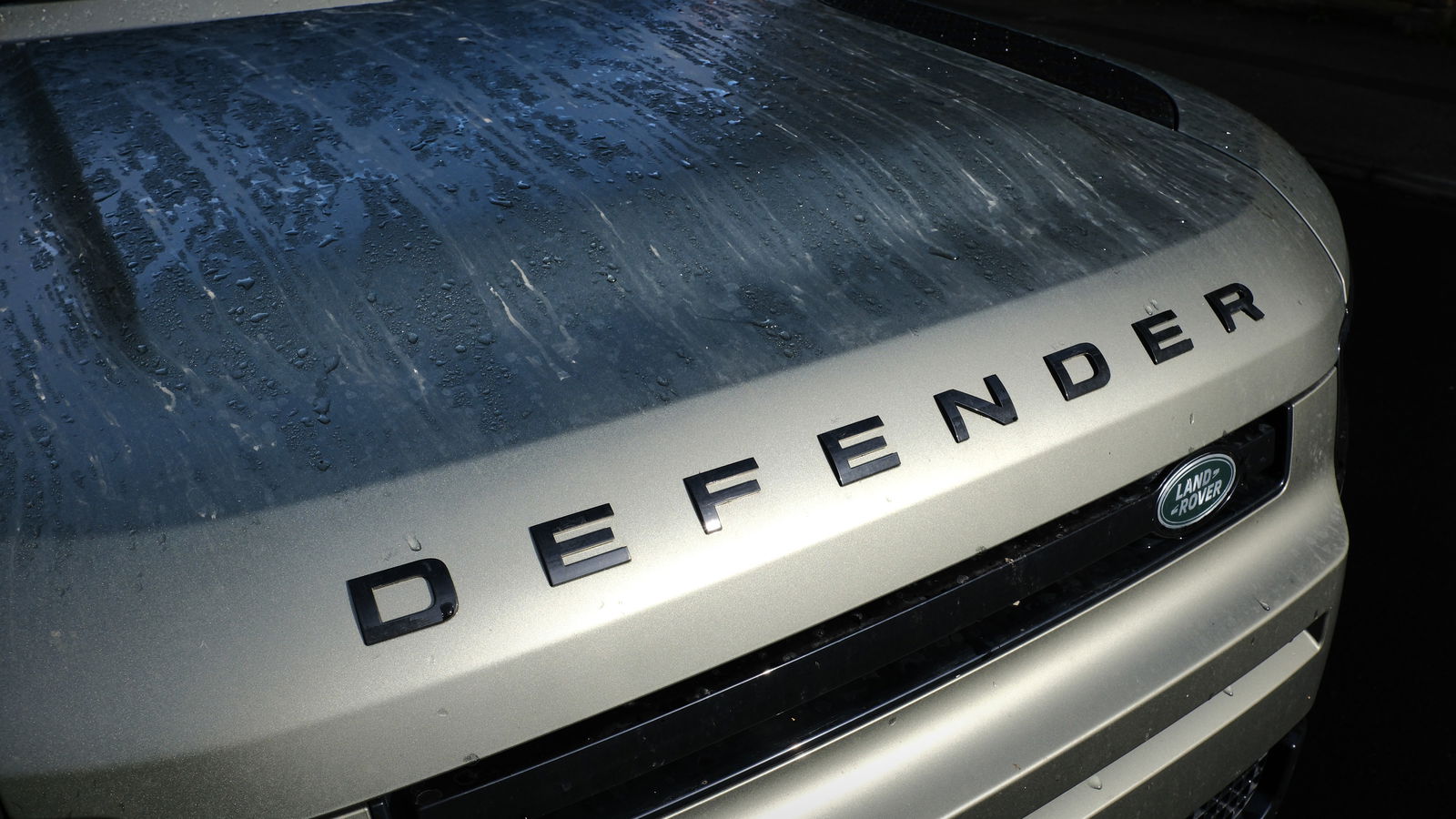
And while you won’t need the GDP of a medium-sized nation to run the D350 like you will a V8, that of a small province might still be handy – as diesels go, it’s a thirsty beast. Land Rover quotes 33.1mpg, but we just about cracked 30.
So, six years after we first saw it and five after we first drove it, with all its rivals only getting newer and shinier, does the more pedestrian Defender still impress? Absolutely. It won’t be cheap to buy – our mid-range X-Dynamic SE was specced up to comfortably north of £80k – or cheap to run, but for those with the means, there’s still very little on sale that has its breadth of talents.

But it’s still kind of in a class of one, blending the off-road talent of something like a Wrangler, Land Cruiser or Grenadier with a way better on-board experience and on-road manners. Arguably, the only other car that can do that is a Mercedes G-Class, and you’ll need to pay a whole lot more for one of those. No wonder, then, that the Defender’s been such a roaring success for Land Rover, and no surprise that the company doesn’t seem too bothered about radically changing anything.
The stats (Defender 90 X-Dynamic SE D350)
- Engine: 3.0-litre twin-turbocharged six-cylinder, diesel mild hybrid
- Gearbox: 8-speed automatic
- Power (bhp): 345
- Torque (lb ft): 516
- 0-62mph: 6.2 seconds
- Top speed: 119mph
- Weight: 2241kg
- Starting price: £65,240

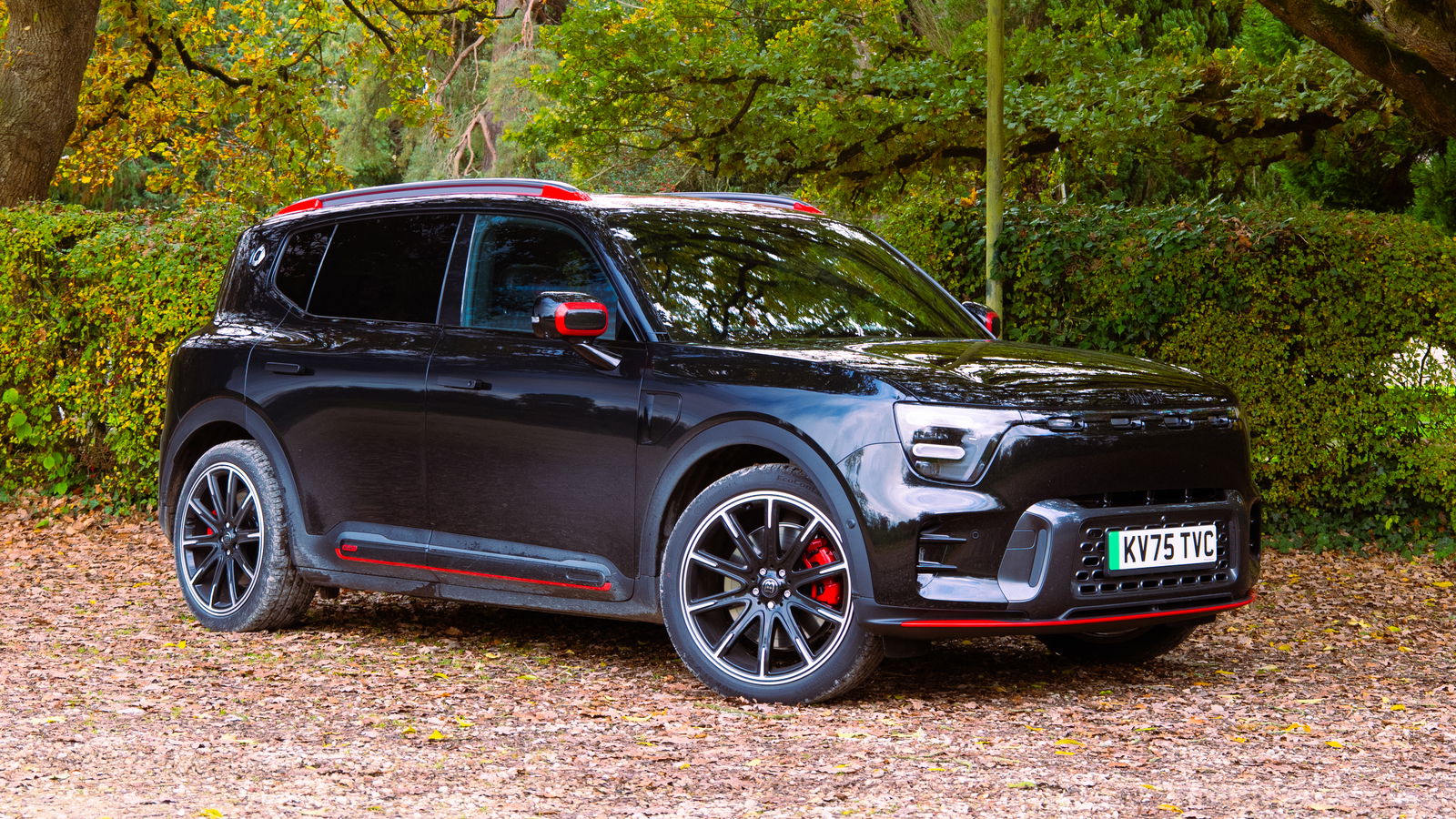





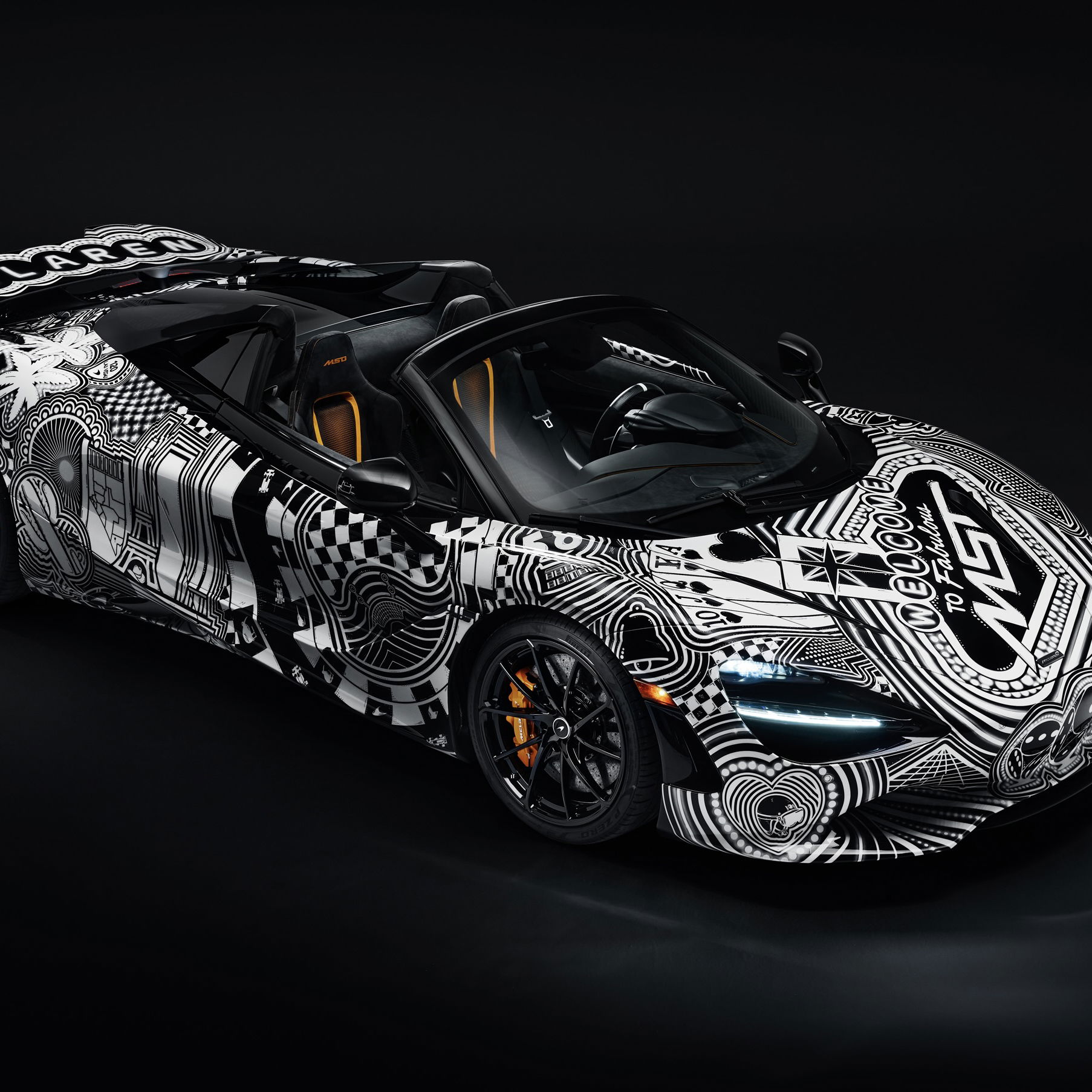
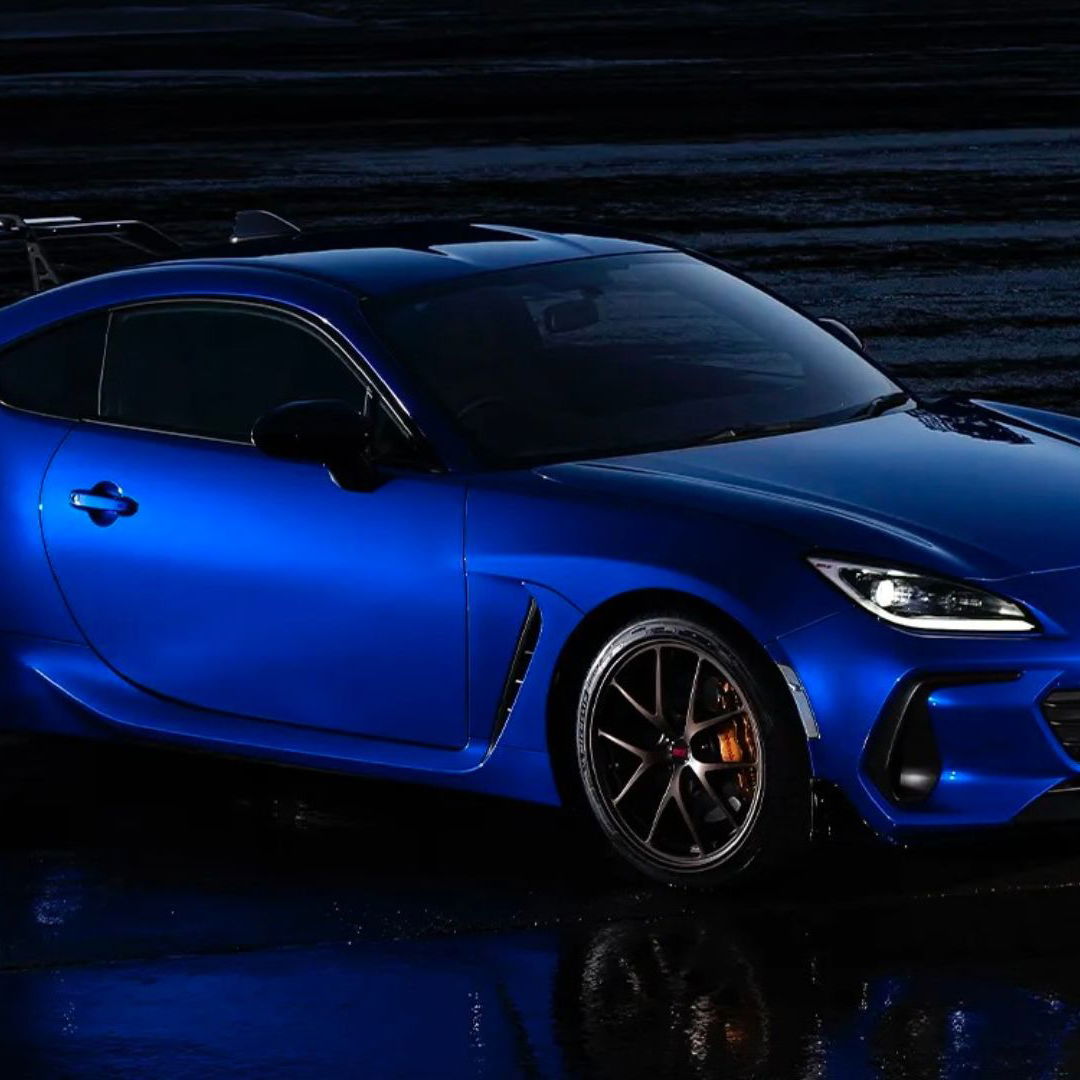
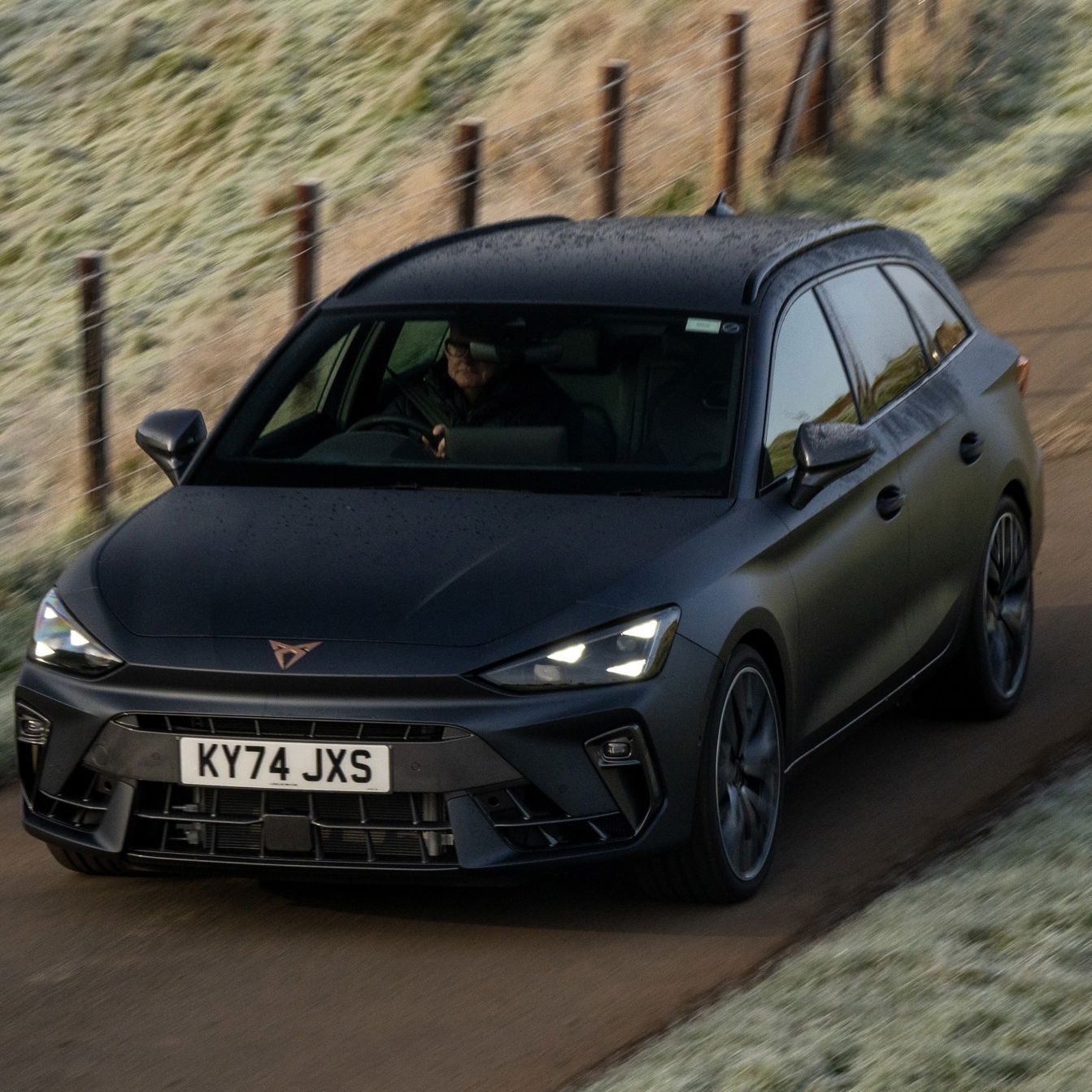




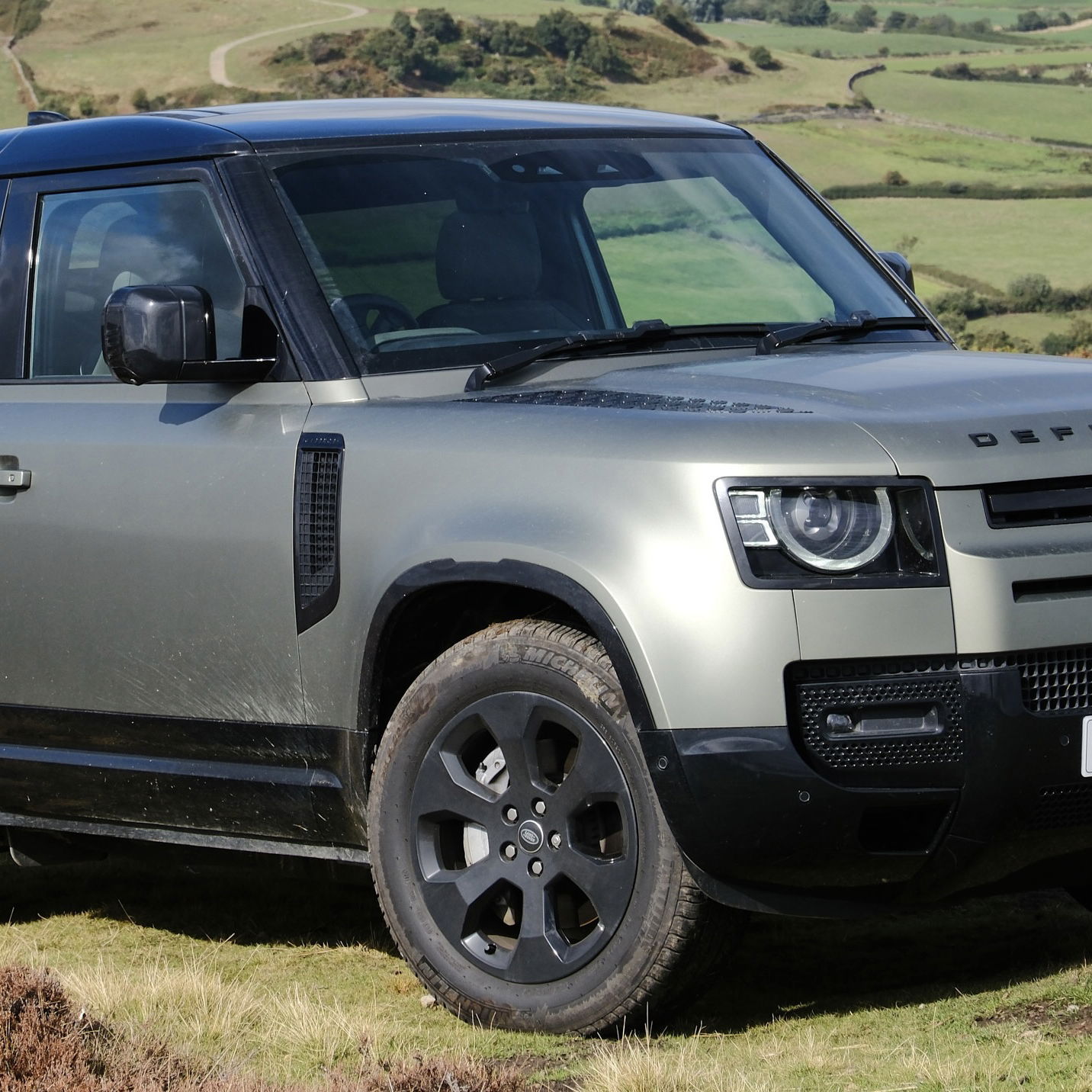
Comments